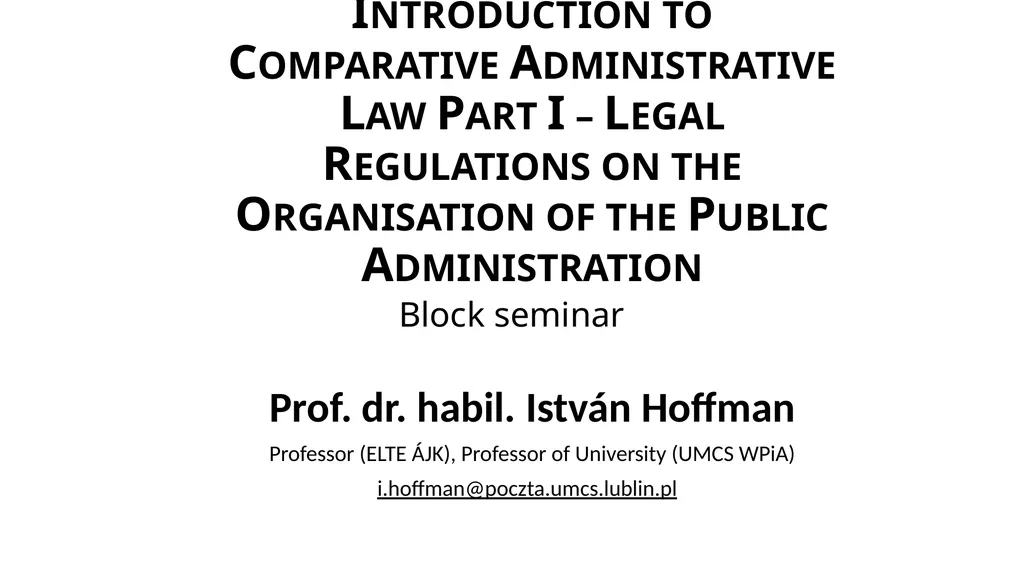
Introduction to Comparative Administrative Law
Author: lois-ondreau | Published: 2025-05-29
Description: Introduction to Comparative Administrative Law Part I Legal Regulations on the Organisation of the Public Administration Prof. dr. habil. István Hoffman Professor (ELTE ÁJK), Professor of University (UMCS WPiA)
Download Presentation
Download the PPT/PDF: Download
Transcript:
Loading transcript�